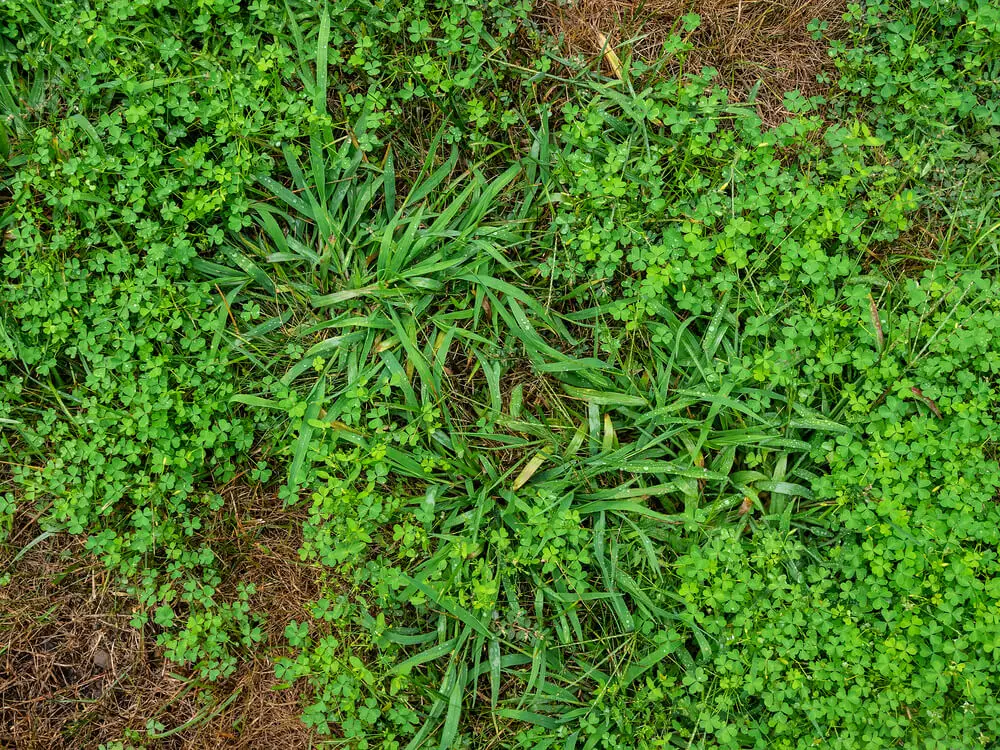Crabgrass is a deadly weed that kills any plants that it touches; it is one of the weeds that you don’t want growing in your lawn because you might not be able to control its proliferation.
Uprooting the plant is a temporary relief for your lawn but only if the weed hasn’t set seed. Remember that the crabgrass produces up to 150,000 seeds, now this is a large number of seeds to deal with especially if you have several crabgrasses in your lawn.
As a rule of thumb, therefore, you could uproot the crabgrass before they set seed in your lawn, crabgrass is not choosy and all it needs to grow is bare ground, sunlight, and water.
The weed also has some rather resilient seeds that will survive through winter by remaining dormant but immediately the ground temperature warms up crabgrass begin to germinate.

Step by step process on how to kill crabgrass with baking soda
The use of baking soda to kill weeds in the lawn has to be done with care because it has the potential to kill other plants, besides being a natural substance.
When used on crabgrass, baking soda is believed to have a phytotoxic effect; meaning that it delays seed germination or rather inhibits the plant growth consequently leading to its death.
Once you notice the crabgrass early in the season, this is the right time to pounce before they are established given their generosity when it comes to seeding.
Baking soda contains sodium a compound that is extremely saline and which might have negative effects on the plants surrounding the crabgrass.
So, before you proceed to use baking soda, cordon off the affected area using pieces of wood to prevent the compound from falling far off on the other thriving plants.
The patch of crabgrass that you want to eliminate will turn blackish and die, once baking soda has been applied on it and that is why it is important to mark the area.
Be sure to have other re-seeding seeds on hand that you will use on the bare patch to prevent re-growth of the crabgrass.
- Wet the cordoned area with water in your lawn, being strict not to interfere with the other surrounding plants then carefully and slowly apply the baking soda, don’t throw it around like you would when sprinkling water, move closer and apply it only where the weed has grown.
- Ensure that all the leaves of the weed have been supplied with a good dose of baking soda.
- Let the baking soda marinate the leaves for a few hours and you will later be presented with unsightly black smoky leaves (dead).
- The next step would be to uproot the dead crabgrass from your lawn, if it is a big patch you will have to find a weed remover, but if there are a few pieces, put on your gardening gloves and remove the plants.
- The bare spot is an opportunity for weeds to grow back, and to avoid the above, you will re-seed the spot with actual grass seed or whatever it is that you want to grow in the spot.
If you suspect that the crabgrass seeds have already found a dwelling on your lawn and are just waiting for the right temperatures and conditions to germinate, then you can use the pre-emergent herbicides which help prevent root development and seed germination.
Below are some of the efficient herbicides.
Name of Herbicide | Target Grass | Application | |
Tenacity Turf Herbicide | Chickweed, Crabgrass, Foxtail, Dandelion, Yellow Nutsedge, Thistle, Barnyardgrass, and the wild carrot | Blanket spray the lawn then water in | |
Dithiopyr | Large crabgrass and smooth crabgrass | Eight weeks before crabgrass seeds germinate | |
Oryzalin | Crabgrasses | Late winter or early spring | |
Prodiamine | Henbit, chickweed, Foxtail, crabgrass, Annual bluegrass, Spurge, knotweed | Spring or fall application |
Pre-emergent herbicides are applied earlier to prevent the seeds from establishing, but there are also the post-emergent herbicides that are applied later when the seeds have already established, so be sure to note the difference.
And while pre-emergent herbicides will prevent the germination of weeds, they are known to additionally inhibit the establishment of the lawn grass seed.
So to avoid the above problem you must read the instructions on the respective pre-emergent herbicide container as regards seeding, and wait for about 60 days, or two mowings before you overseed the lawn areas that the pre-emergent preventer was used.
Final Thoughts
Baking Soda is a naturally occurring crystalline chemical compound, its use does not involve a steep learning curve but you have to ensure that you only use it on the respective grass weed.
The pre-emergent and post-emergent herbicide, on the other hand calls for understanding and you, therefore, have to read through the attached instruction label before use.
And since you will be dealing with chemicals be sure to put on the appropriate protective attire.
Also read
Dallisgrass vs Crabgrass – Differences and Identification
Crabgrass vs. Quackgrass – Differences and Idenitification
Resources
